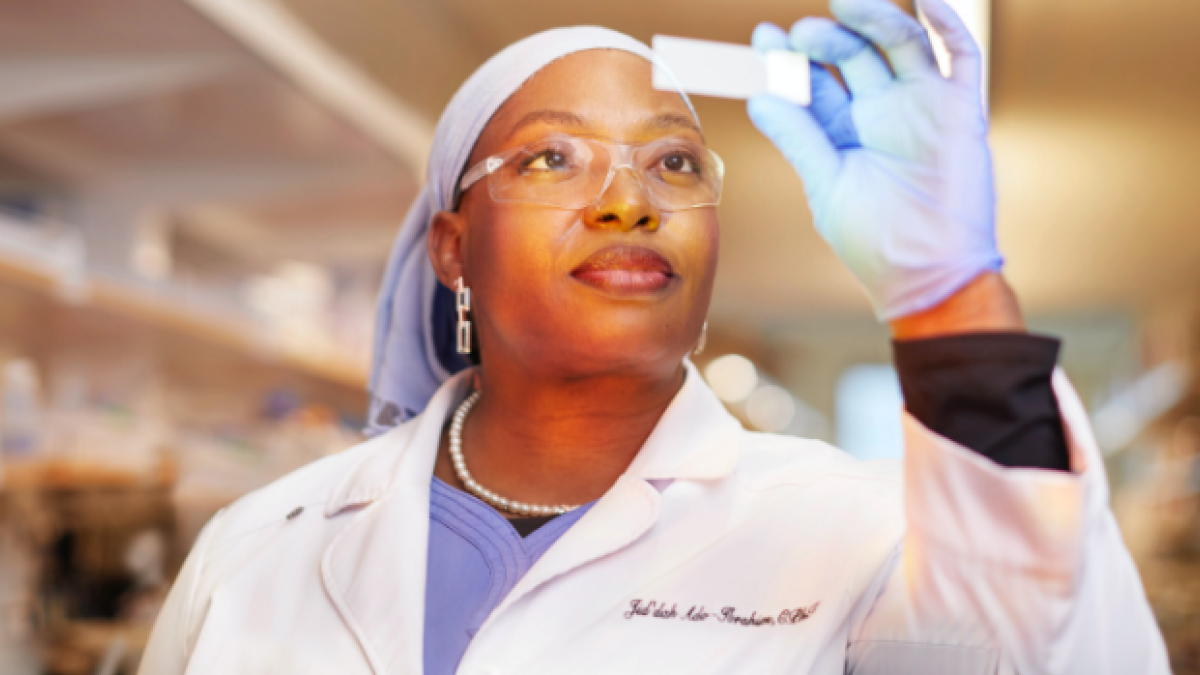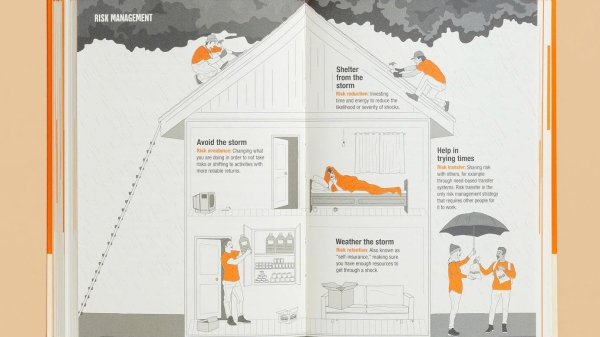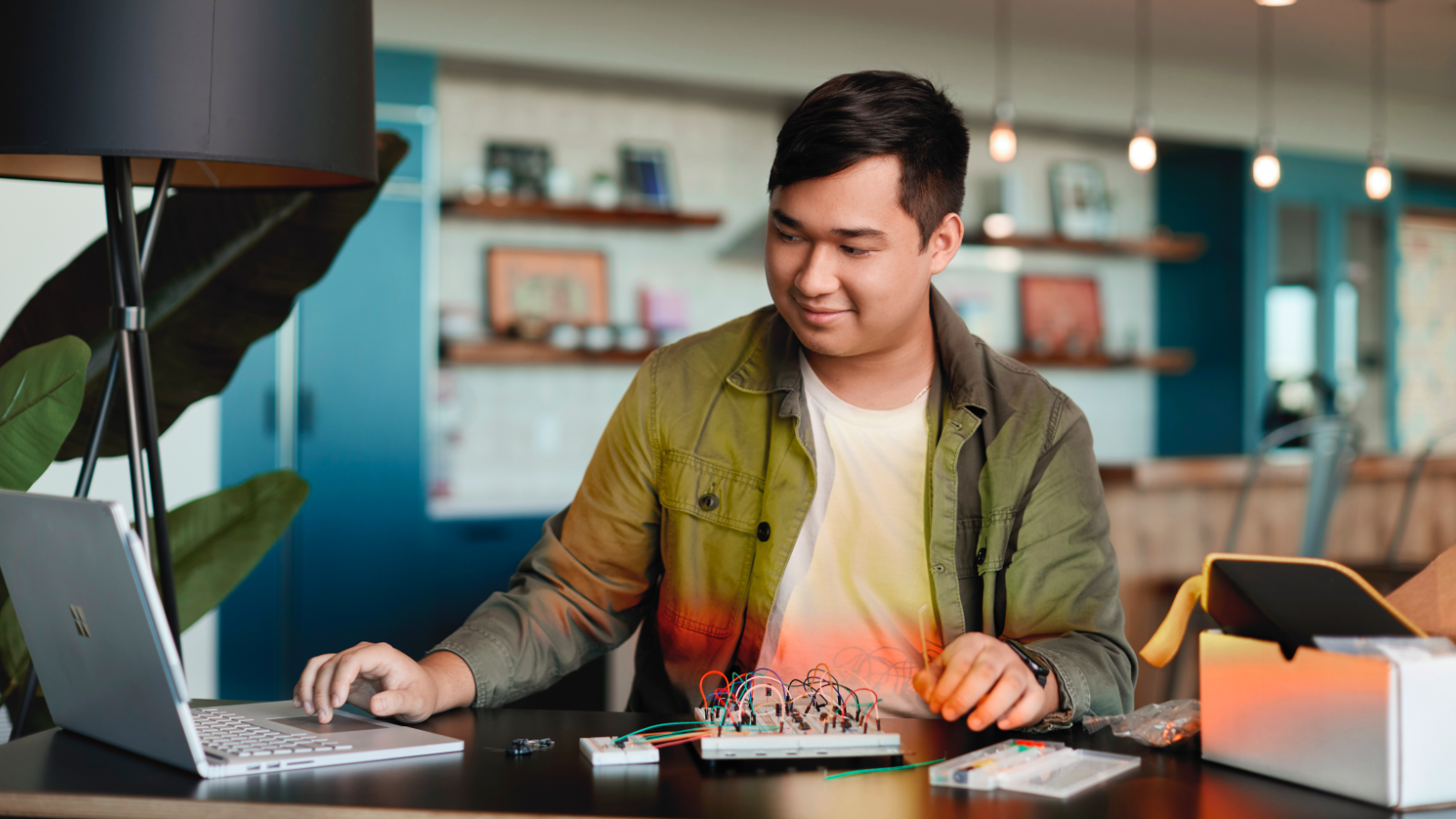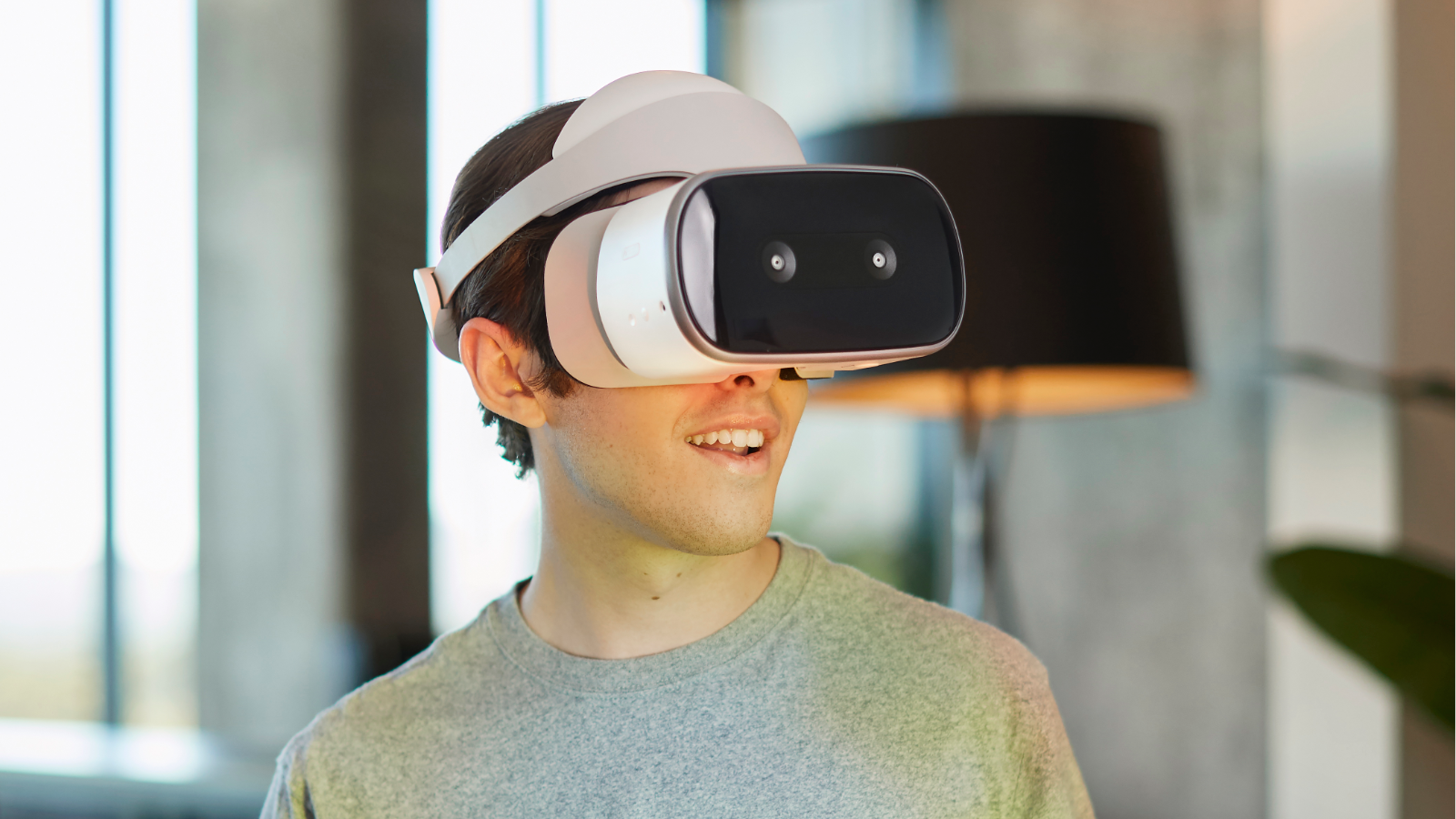Lab-tested and online
Reinventing education in the sciences for students online

Editor's note: This story originally appeared in the winter 2022 issue of ASU Thrive magazine.
Some say it’s impossible to predict the future.
For centuries, the best scientists have tried, from Nostradamus to Nobel prize-winning Marie Curie to Nikola Tesla. But in the world of higher education, there have been few willing to put it all on the line.
Then in 2009, leaders at ASU saw a better future — with no boundaries for learning and the entire campus available to the broadest audience possible with the most sophisticated learning tools humans could build. And even while measuring success through inclusion, ASU leaders set out to prove that online courses can command the same academic rigor as any on-ground classroom learning.
To do this, President Michael M. Crow chose Phil Regier as university dean for educational initiatives and CEO of EdPlus to restructure and manage ASU Online, and increase the information technology budget to power the digital learning machine. And, to reinvent education and provide truly immersive experiences for all students (online and in-person), Crow doubled down on ASU’s commitment to finding faculty with ties to technology and science institutions, like NASA scientist and astronaut Cady Coleman and Jim Bell, a planetary scientist and the principal investigator for the Mastcam-Z cameras on NASA’s Mars 2020 rover.
Four years later, in 2013, ASU had the first online hard science degree, the Bachelor of Science in engineering (electrical engineering), up and running. It was just the beginning of the online hard sciences future ASU envisioned. It now extends to biological sciences degrees that have earned graduates spots in top medical schools.
The successful reinvention of more than 120 STEM programs for online required that ASU’s faculty and staff adopt a paradigm shift in how they approached the digital curriculum. It required embracing inclusion and the willingness to redesign entire curricula and labs by learning from both students and instructional designers. And it required ensuring that technology partners would foster the academic rigor the curriculum needed.
The science agenda
Regier says many people in higher education think sciences can’t be taught online because they believe it’s impossible to achieve the same standards. But ASU faculty and staff have put the hard work into transforming education.
“We were and are operating from the mindset that we are abundant and we don’t have limited or constrained resources, so why not do science online?” Regier says.
“Our undergraduate electrical engineering degree is ABET-accredited, and I remember when the agency pushed back when we put that degree up for accreditation,” Regier recalls. “In the end, we won the accreditation with flying colors.”
The tipping point for more online science degree programs, such as in biochemistry and astronomy and planetary sciences, was electrical engineering. Successfully teaching it online opened up the idea of being able to do a lot of other challenging things.
“Then, after we took the biologies online, the physics and chemistry faculty said, ‘If that can be online, then so can physics and chemistry,’” Regier explains. “And that belief led to the growth in astronomy and planetary sciences. So you began to see this rollout of science degrees with impeccable academic rigor and outstanding faculty credentials that you won’t find anywhere else online today.”
In addition to the need to make rigorous science programs available to more students, there’s an economic imperative to educate people for in-demand occupations, such as in STEM. STEM field jobs are expected to grow 8% by 2029, compared with 3.7% for all occupations, according to the U.S. Bureau of Labor Statistics.
One student who reinvented her career is Maria-Elena Sisneroz, ’21 BSE in electrical engineering. “I already received my first degree in biology from UCSD and my doctorate in physical therapy from Northwestern University,” she says. But when she decided to change careers, she needed to take an online program because of her life situation. She emphatically states that she chose ASU because it was the only fully online ABET-accredited program.
Sisneroz says she was able to master the concepts through the take-home lab kits and digital labs. “I had to put a circuit together on a breadboard and observe the signals on an oscilloscope,” Sisneroz says as an example.
In addition to using her engineering degree to work on device design for physical rehabilitation applications for her own startup, KinesioTech, LLC, she took a job as an electrical engineer at Edwards Air Force Base in Southern California.
Online programs include lab kits so students can master rigorous concepts.
The power of labs
Justin Harding is the senior director of Instructional Design and New Media for ASU Online. Harding says that the challenge with many science and engineering degrees is the capability, through additional resource investment, to create and offer quality lab experiences for students online.
“Labs are the initial barrier to why many universities are not interested in pursuing online science degree development,” Harding says. “It is not just about saying we will have an online lab, it is reevaluating the goal of lab activities and creating and conceptualizing those experiences in the online modality.”
In ASU’s online science courses, there are four lab types: simulations built in virtual reality, lab kits mailed to students, kitchen labs that use ingredients like soil and water from a student’s environment, and follow-along video labs. And for many of the science degree programs — such as the Bachelor of Science in biological sciences, Bachelor of Science in biochemistry, Bachelor of Science in forensic science and more — there’s a fifth lab type: in-person labs performed by students during an intense summer lab week on campus, or two weeks for some classes, such as organic chemistry.
“They’re going to be scientists, and scientists work with their hands, and we can’t deprive the students of this opportunity,” explains Ian Gould, President’s Professor in the School of Molecular Sciences, about the rationale for the in-person labs. “So one of the most important components of designing our whole online degree program was to make sure the students receive the experience they need to succeed.”
Julie Greenwood, vice dean for educational initiatives at ASU Online, says that when a student completes a one-week intensive lab, they gain much greater competency in the skills and relationship building with the faculty than what they would achieve during a 15-week lab course.
“Data show that those are poor learning experiences, and students are often unable to retain what they’re doing from week to week,” Greenwood says. “Now, on-campus biochemistry faculty are talking about shifting their campus lab programs to be more like what’s happening with the online programs.”
Greenwood attributes the success of the digital labs to technology partnerships and the creativity and innovation of faculty.
“We partner with a number of tech vendors such as Cogbooks, InScribe, Zybooks and Labster, which enables digital laboratory experiences for students to focus on the concepts as opposed to the manipulations, and that kind of work is much more like what they would do in an actual career,” Greenwood says.
For example, during VR labs created with Labster, students interact with lab equipment as if in the lab in real life, and work through hypothesis and the scientific method with the help of a digital assistant who provides personalized feedback. During the VR labs, students explore concepts like gene expression on a molecular level, as well as get an inside molecular look at what the lab machines are doing.
Mary Loder, instructional designer at EdPlus, adds that tools like Zybooks allow students who are learning programming, including in physics and engineering majors, to see effects in real time. “This gives students the opportunity to see animations of their code before they submit them,” Loder says.
In this sense, these robust, immersive lab experiences open up the entire university to any student regardless of life circumstances — while helping them master rigorous concepts.
Virtual reality labs allow students to simulate being in a physical lab and get additional insights beyond what is possible in an in-person lab.
A science and math deep dive
Harding firmly believes that the reason ASU has put in the deep work to achieve the same scientific and mathematical rigor in online courses is simple: ASU recognizes that learners want quality online STEM programs.
“So even when it was challenging to build out and ensure the quality of the learning experiences, we knew we had to do it,” adds Harding.
Case in point: The two Bachelor of Science in biochemistry programs and the five Bachelor of Science in biological sciences programs launched in 2017 and 2020. The former has 941 students enrolled as of fall 2021, and the latter has nearly 3,200 students, making it one of the highest enrollment online degree programs. Harding believes that these programs address a significant segment of students who cannot attend location-based programs. ASU has launched several more biological sciences degree programs since then, including a Bachelor of Science in applied biological sciences (preveterinary medicine).
“It’s a blended learning experience created specifically for these sciences students,” Harding says. “It has taken deep commitment and humility with new insights from faculty to understand the hard work of finding ways to reinvent the curriculum.”
Innovation in science classes is exactly what entire teams, including faculty, instructional designers, technology partners and other innovators, did to take rigorous science programs online — and continue to do to improve learner outcomes. In 2019, ASU created the first adaptive learning platform in the School of Life Sciences called BioSpine. BioSpine shifts the learning model from mass production to mass personalization through a scaffolded support structure that personalizes each student’s learning throughout their four-year degree. It has yielded impressive results for students — and the examination of all concepts students need to master involved more than 50 faculty and 10 staff members. And, it was essential in being able to reinvent the curriculum for both the in-person and online degree programs, Regier says.
In 2020, the online Bachelor of Science in astronomical and planetary sciences launched along with an online Bachelor of Arts in physics.
The former uses the “math that helped us understand conceptually what the universe looked like before we could go above the blue line and see; it’s the math that will take us to Mars,” Loder says. “We couldn’t just re-create on-ground math courses. We had to think about the courses in a different way.”
To help people acquire new skills for the changing economy, ASU also has created numerous online certificate programs and a data science degree program. So far, ASU offers nearly 300 degree and certificate programs online.
“Students should be able to come in and take a continuing education course or two, or a full degree, to pick from the tree whatever they need,” says Regier. “More and more, we’ll use even more immersive experiences like Dreamscape Learn and personalized technology. We continue to push the limits of education to make it ever more available to more learners.”
Top photo: ASU’s online biological sciences degree programs include an intense on-campus lab week. Jid’dah (Jai) Ado-Ibrahim, a junior in the program, says the lab week provides critical hands-on experience. She balances her education with parenting her three daughters and working full time at a local pharmaceutical company.
Written by Jennifer Kite-Powell
More Science and technology

ASU author puts the fun in preparing for the apocalypse
The idea of an apocalypse was once only the stuff of science fiction — like in “Dawn of the Dead” or “I Am Legend.” However these days, amid escalating global conflicts and the prospect of a nuclear…

Meet student researchers solving real-world challenges
Developing sustainable solar energy solutions, deploying fungi to support soils affected by wildfire, making space education more accessible and using machine learning for semiconductor material…

Miss Arizona, computer science major wants to inspire children to combine code and creativity
Editor’s note: This story is part of a series of profiles of notable spring 2024 graduates. “It’s bittersweet.” That’s how Tiffany Ticlo describes reaching this milestone. In May, she will graduate…

